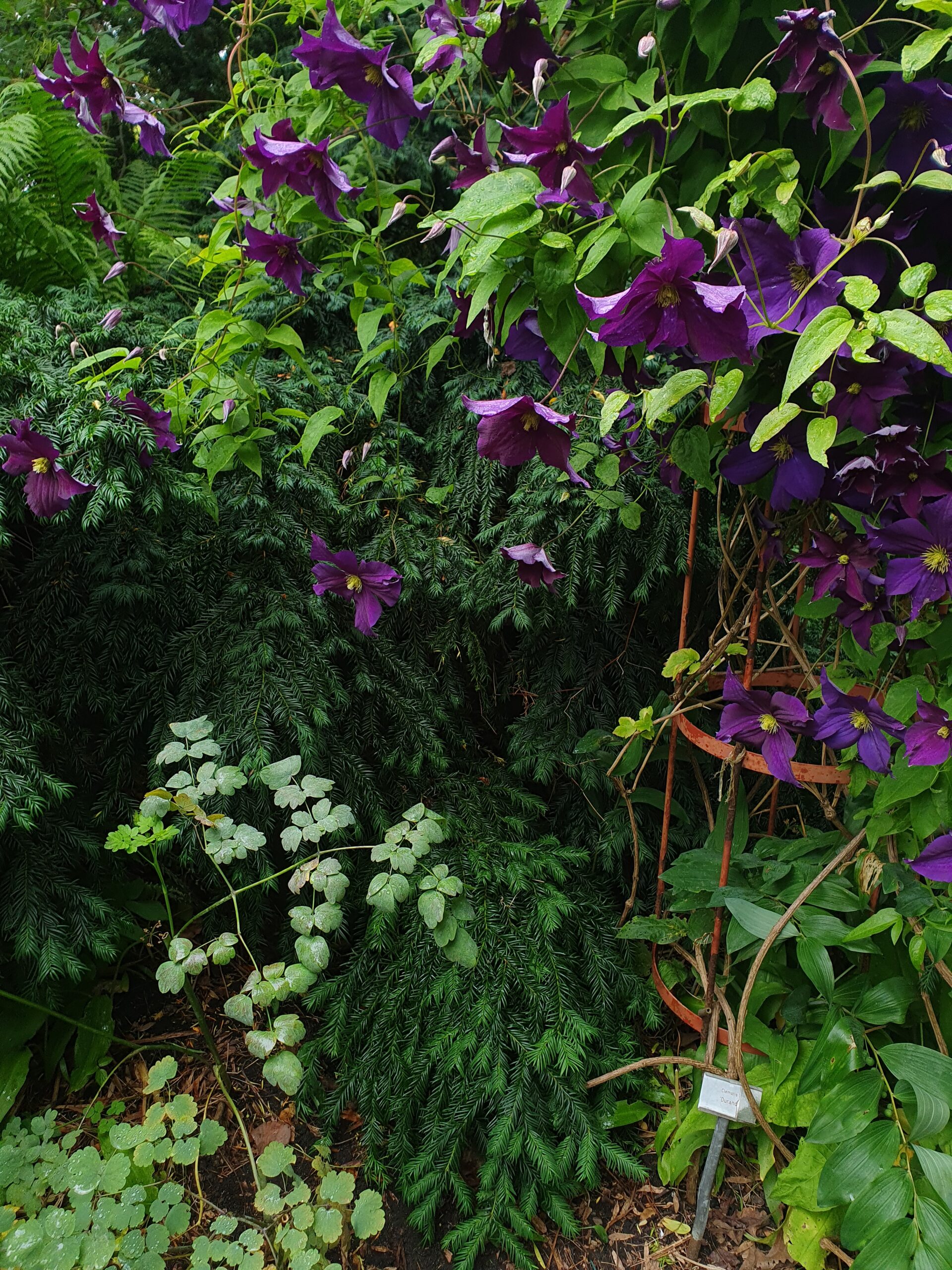702words, 3min read | 751woorden, 4min leestijd
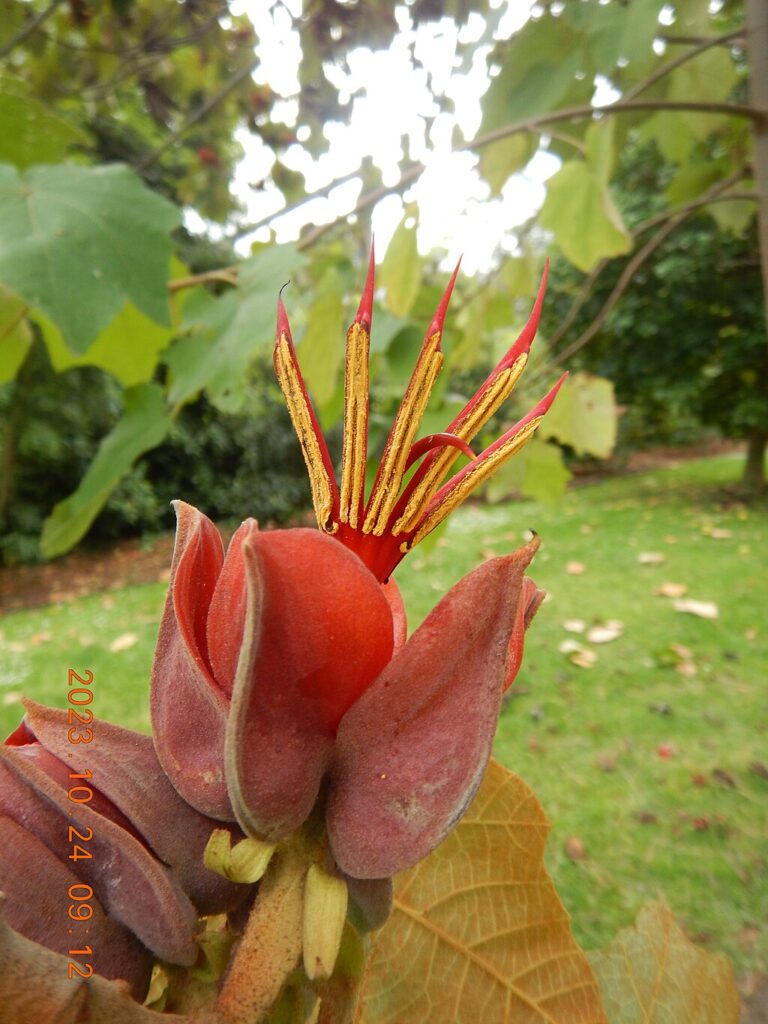
My new project “Rare Flowers” is inspired by the following text written by the German psychotherapist Bert Hellinger (1925-2019) about black sheep within the family system:
Photo credit: Hand-flower (Chiranthodendron pentadactylon) by Jared Dubberlin, CC BY-SA 4.0 https://creativecommons.org/licenses/by-sa/4.0, via Wikimedia Commons
Mijn nieuwe project “Zeldzame Bloemen” is geinspireerd op de volgende tekst van de Duitse psychotherapeut Bert Hellinger (1925-2019) over zwarte schapen binnen het familiesysteem:
“The so-called black sheep of the family are, in fact, hunters born of paths of liberation into the family tree.
The members of a tree who do not conform to the norms or traditions of the family system, those who since childhood have constantly sought to revolutionise beliefs, going against the paths marked by family traditions, those criticised, judged and even rejected, these are usually called to free the tree of repetitive stories that frustrate entire generations.
The black sheep, those who do not adapt, those who cry rebelliously, play a basic role within each family system, they repair, pick up and create new and unfold branches in the family tree.
Thanks to these members, our trees renew their roots. Its rebellion is fertile soil, its madness is water that nourishes, its stubbornness is new air, its passion is fire that re-ignites the light of the heart of the ancestors.
Uncountable repressed desires, unfulfilled dreams, the frustrated talents of our ancestors are manifested in the rebelliousness of these black sheep seeking fulfilment. The genealogical tree, by inertia will want to continue to maintain the castrating and toxic course of its trunk, which makes the task of our sheep a difficult and conflicting work.
However, who would bring new flowers to our tree if it were not for them? Who would create new branches? Without them, the unfulfilled dreams of those who support the tree generations ago would die buried beneath their own roots.
Let no one cause you to doubt, take care of your rarity as the most precious flower of your tree.
You are the dream of all your ancestors.“
– Bert Hellinger
“Black sheep are the rare flowers of the family tree: you are the dream of all your ancestors”. Hier heb ik naar gezocht sinds het afronden van mijn project Botanische Familie. Die zoektocht eindigde in 2024 enigszins onvervuld, aangezien ik geen aanknopingspunten vond in mijn genealogie waarmee ik mij wilde verbinden. Tot ik deze tekst van Hellinger ontdekte. En nu begrijp ik: ik wil me dan misschien wel niet met mijn voorouders verbinden, maar zij willen dat wel met mij. En dat is goed. Ik voel mij daardoor erg gedragen en gesteund om niet op te geven, maar juist door te zetten. Om nog meer mijzelf te worden. Nog beter naar mijzelf te luisteren. Mijn hart te volgen. De vloek te breken. Van angst voor het leven, ingebeeld slachtofferschap, kleinhouderij, emotionele armoede en gebrek aan verantwoordelijkheid. Ik ben die zeldzame bloem en ik zal gaan bloeien.
“Black sheep are the rare flowers of the family tree: you are the dream of all your ancestors.”: This is what I’ve been searching for since completing my Botanical Family project. That search ended somewhat unfulfilled in 2024, as I couldn’t find any connections in my genealogy that I wanted to connect with. Until I discovered this text by Hellinger. And now I understand: I may not want to connect with my ancestors, but they do want to connect with me. And that’s okay. This gives me great support and encouragement not to give up, but to persevere. To become even more myself. To listen to myself even better. To follow my heart. To break the curse. Of fear of life, imagined victimhood, small-scale farming, emotional poverty, and lack of responsibility. I am that rare flower, and I will blossom.
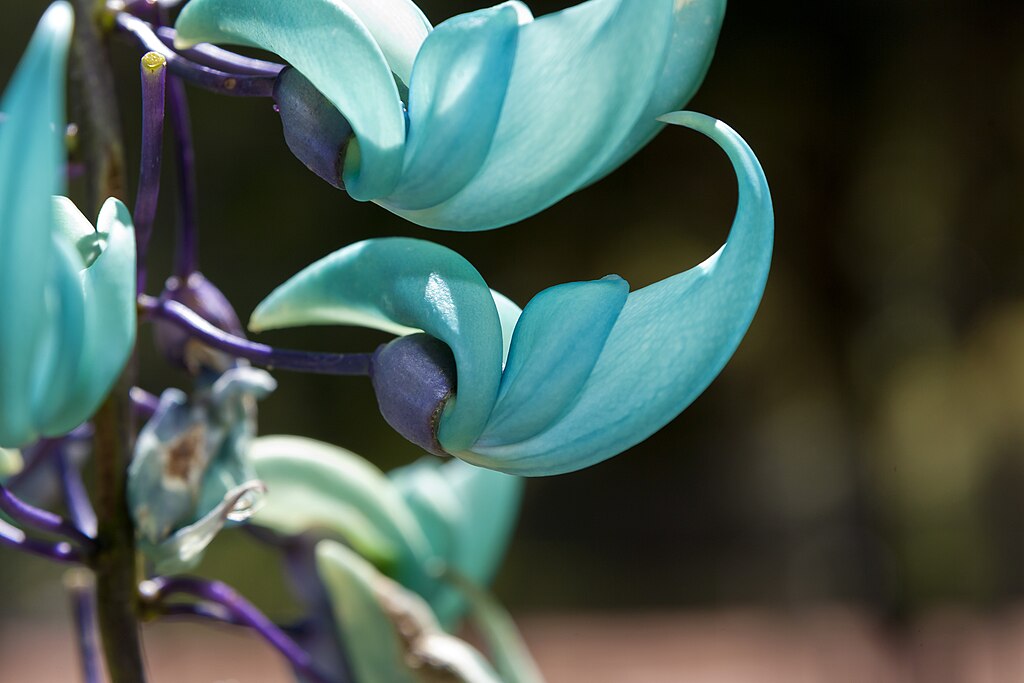
For all the black sheep
The paintings I’ll be making will be my forever reminder that it is our birth given right to blossom and that it is worth it to find fertile soil to do so. And these paintings are for you, if you’re also the black sheep in your family who chooses to do things differently, to rise above the pain and loneliness, to forge new pathways in the brain, to walk your own path every day instead of the inherited, beaten path.
These paintings are for all the black sheep. Your courage, your perseverance, your determination, your sensitivity, mindfulness, tenacity, and resilience. Cheers! That we may blossom!
De schilderijen die ik ga maken zullen mij er altijd aan herinneren dat het de moeite waard is om te bloeien. En deze schilderijen zijn er voor jou, als jij ook het zwarte schaap uit jouw familie bent dat ervoor kiest om dingen anders te doen, boven de pijn en eenzaamheid uit te stijgen, nieuwe breinpaden aan te leggen, iedere dag opnieuw je eigen pad te lopen in plaats van de geerfde, gebaande weg.
Deze schilderijen zijn voor alle zwarte schapen. Jullie moed, jullie doorzettingsvermogen, jullie vastberadenheid, jullie gevoeligheid, opmerkzaamheid, onverzettelijkheid en veerkracht. Proost! Opdat we gaan bloeien!
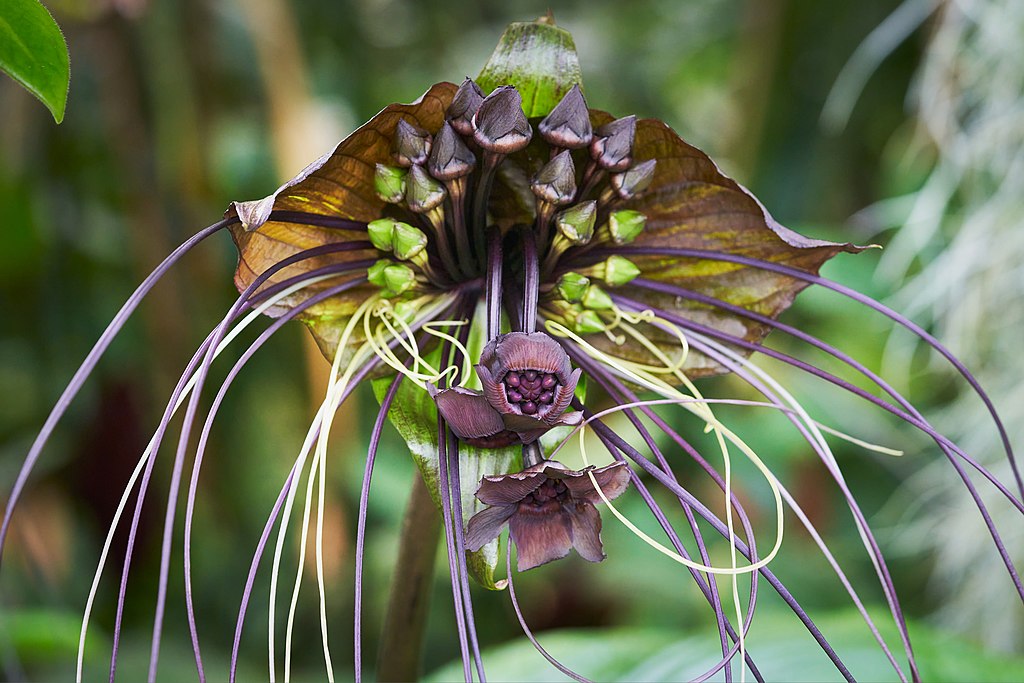
The Rare Flowers
Perhaps some flowers will be dropped of the list, perhaps more will be added, but this is my pre-selection of the rare flowers I want to paint:
Misschien vallen er nog bloemen af, misschien komen er nog meer bij, maar dit is mijn voorselectie van de zeldzame bloemen die ik wil gaan schilderen:
- Reuzenaronskelk / Titan arum (Amorphophallus titanum)
- Spookorchis / Ghost orchid (Dendrophylax lindenii)
- Japanse roos “Middlemist’s Red” (Camellia japonica “Middlemist’s Red”)
- Jade vine (Strongylodon macrobotrys)
- Stinking corpse lily (Rafflesia arnoldii)
- Canarische rolklaver / Parrot beak (Lotus berthelotii)
- Chocolate cosmos (Cosmos atrosanguineus)
- Gloriosa Rothschildiana / Rhizome / Carsonii
- Franklin tree (Franklinia alatamaha)
- Gibraltar campion (Silene tomentosa)
- Cooke’s kokio (Kokia cookei)
- Venusschoentje / Venus slipper (Paphiopedilum rothschildianum)
- Witte en zwarte vleermuisbloem (Tacca chantrieri)
- Orchidee / Slipper orchid (Phragmipedium caudatum)
- Indian pipes (Monotropa hypopitys, Monotropa uniflora, Monotropa coccinea)
- Sea daffodil (Pancratium maritimum)
- Prickly wattle (Acacia erinacea)
- Hand-flower (Chiranthodendron pentadactylon)
- Hibiscus (Hibiscus arnottianus)
- Trompetbloem / Angel’s trumpets (Brugmansia)
- Sapphire Tower (Puya alpestris, Puya berteroniana)
- Queen of Sheba (Thelymitra speciosa)
- Queen of the Night (Epiphyllum oxypetalum)
Flowers?
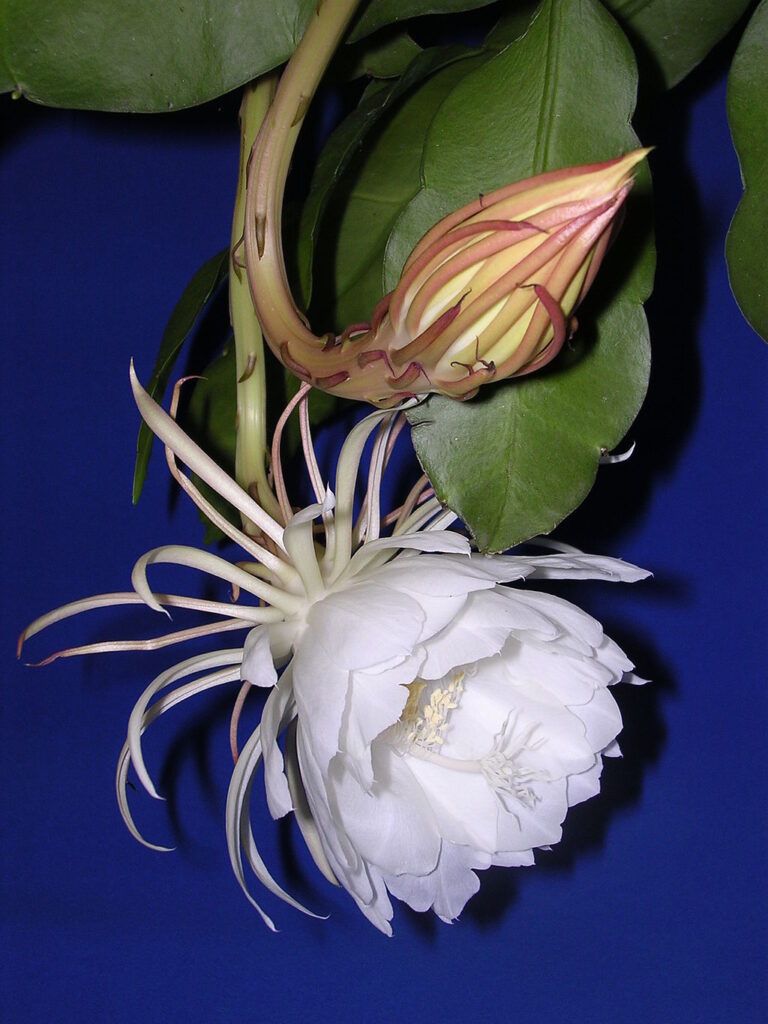
Painting flowers feels like a huge break from my previous work, and who knows, maybe later there will be “the period before Rare Flowers and the period after.” But perhaps it’s also a logical consequence of how everything came together over the last year after painting Night Garden Solace—because let’s face it: flowers were the main focus there for the first time.
Photo credit: Queen of the Night (Epiphyllum oxypetalum) take by MAK, Wing Kuen. Photo taken in Hong Kong., CC BY-SA 3.0 http://creativecommons.org/licenses/by-sa/3.0/, via Wikimedia Commons
Bloemen schilderen voelt als een enorme cesuur met mijn eerdere werk en wie weet is er later “de periode voor Zeldzame Bloemen en de periode erna”. Maar misschien is het juist ook een logisch gevolg van hoe alles het afgelopen jaar bij elkaar is gekomen na het schilderen van Nachttuintroost – want laten we wel wezen: daarin hadden voor het eerst bloemen de hoofdrol.
